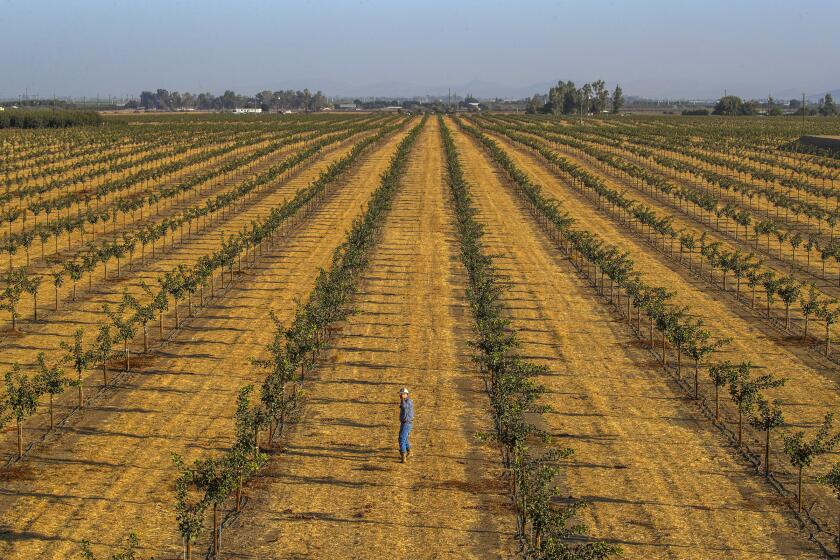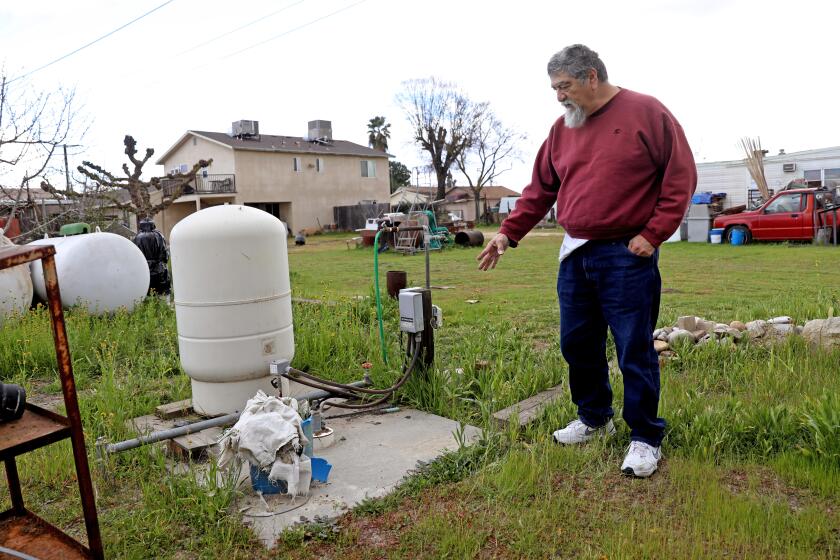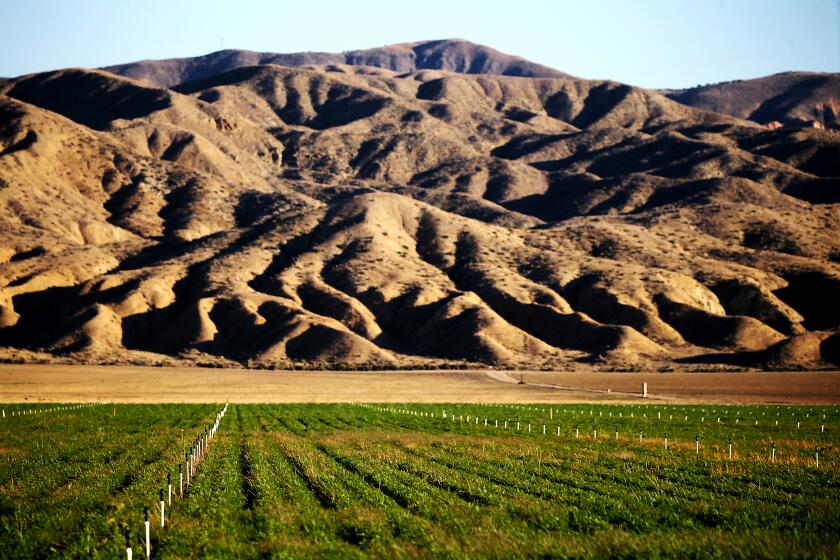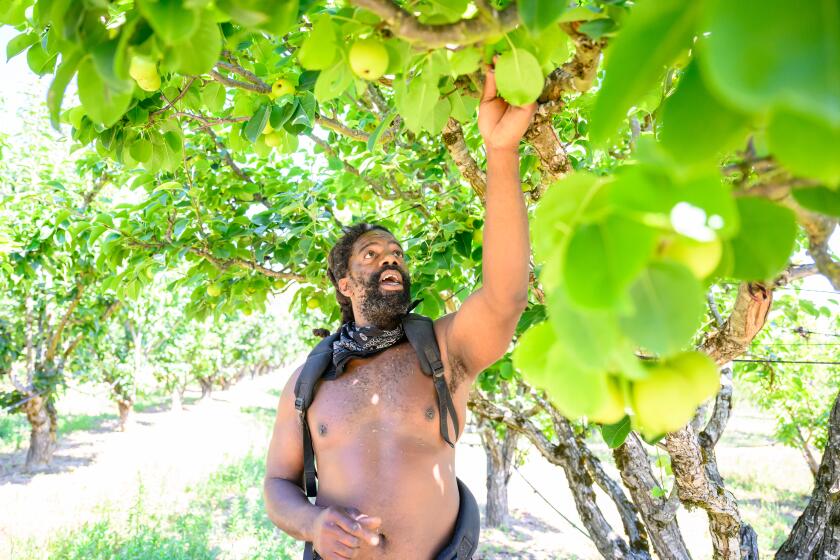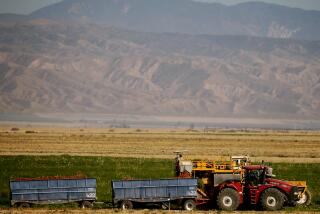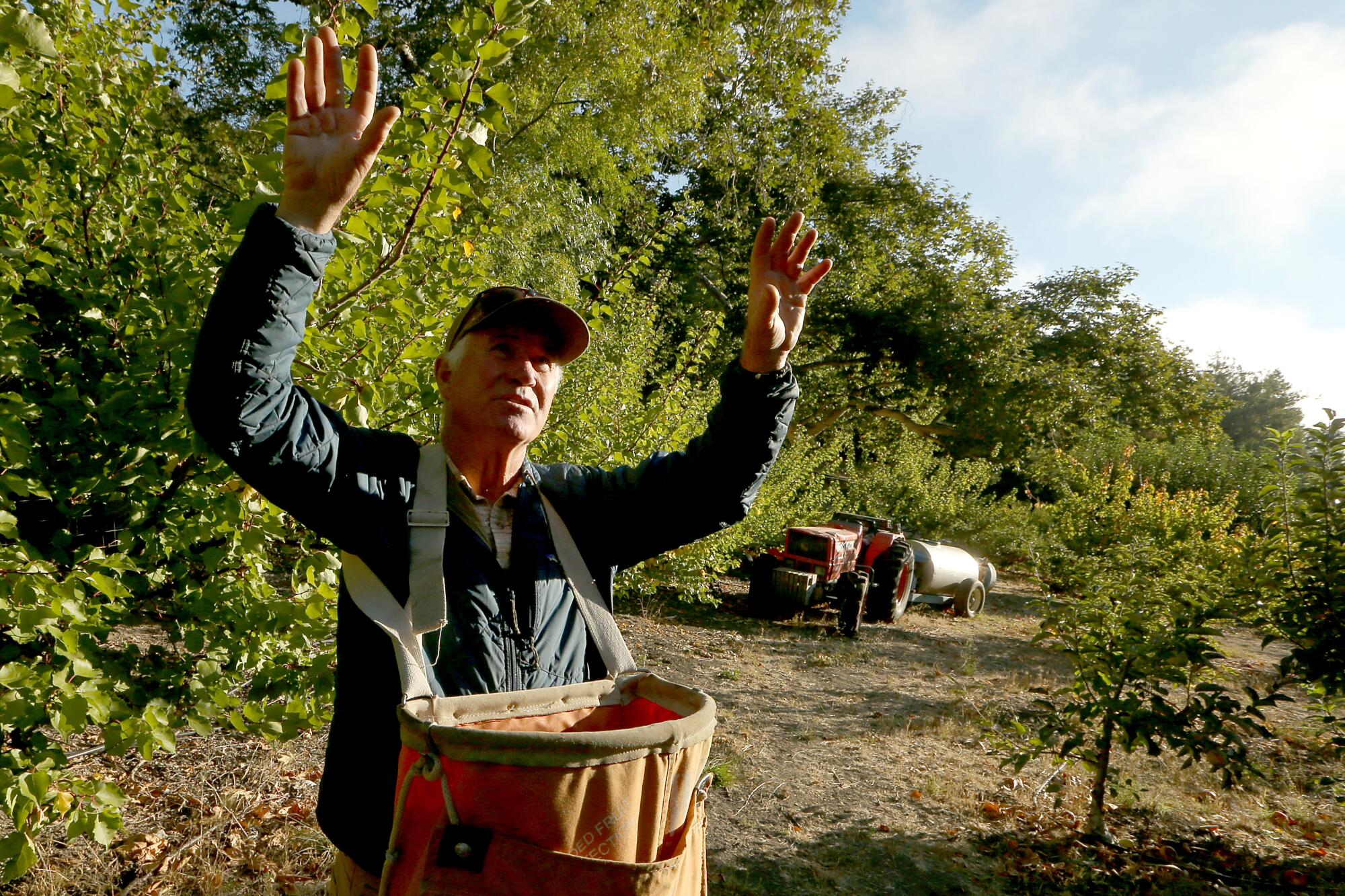
SAN LUIS OBISPO, Calif. — Leaves rustled as Mike Cirone reached into a tree and gently picked an apple. The orchard was filled with a profusion of ripe fruit in shades from golden-green to pinkish-red.
But unlike other crops that guzzle water from canals and wells, this bounty of apples grew on its own without irrigation.
Cirone specializes in dry farming — applying little or no water, and relying on rainfall and the moisture stored in the ground.
This is how farming has long been done in See Canyon near San Luis Obispo, where the orchards spread out beside a creek at the foot of a steep ridge shaded by oak trees.
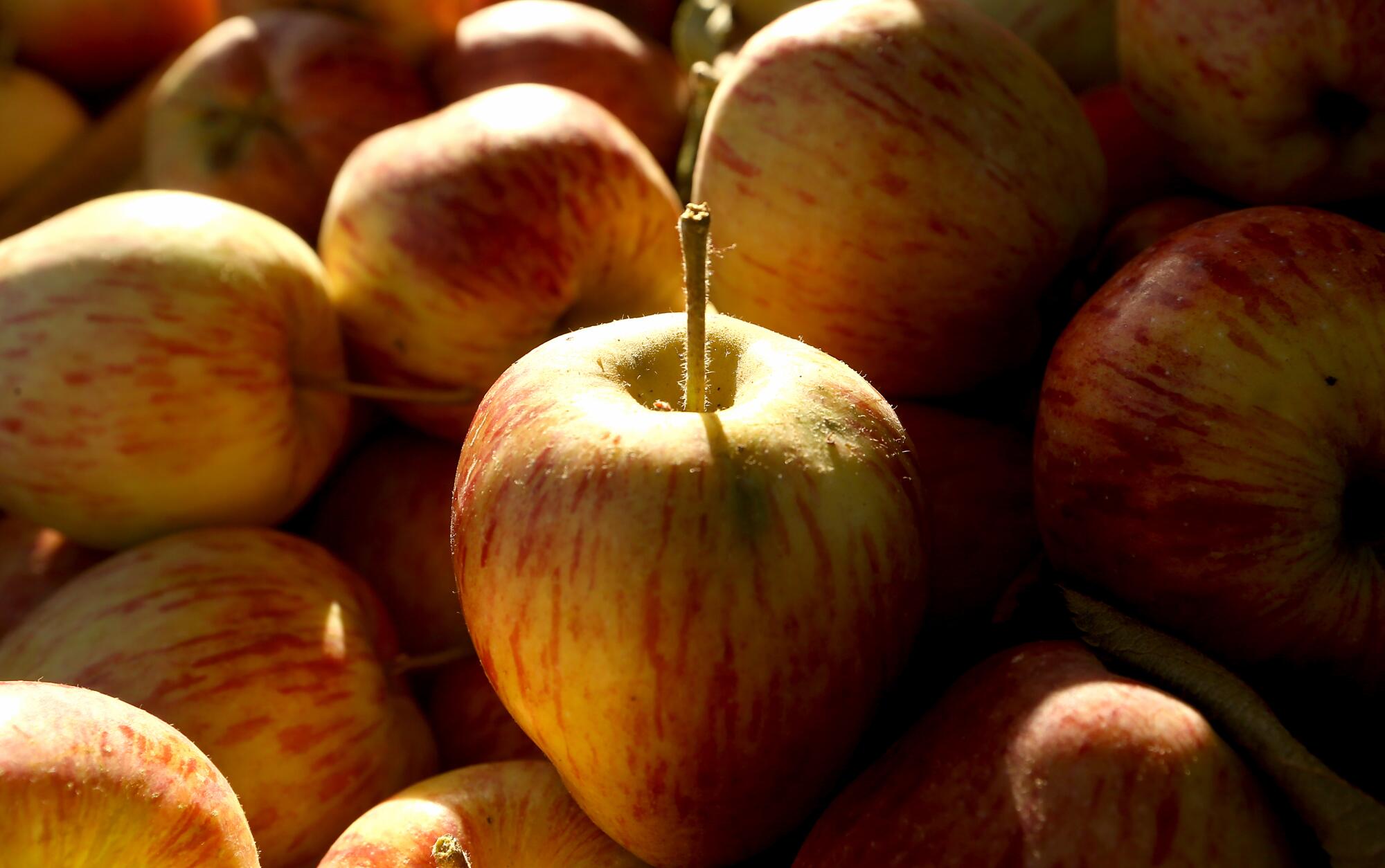
Cirone has been farming here for 40 years, perfecting his growing techniques and cultivating dozens of varieties of apples.
“It’s the way it was always done here, and it worked,” Cirone said. “Why water if you don’t have to? But what you realize is that also, you have something that has a lot more flavor.”
The lack of watering concentrates the tartness and sweetness. And the apples come off the trees crisp and juicy.
Aggressive and impactful reporting on climate change, the environment, health and science.
“They’re dry farmed. There is a distinct flavor,” he said.
Pausing from picking, Cirone took a Fuji apple and sliced off a hunk with a knife. As juice dribbled, he took a bite.
“Oh my God. It’s good,” he said. “I’m stoked at the quality of this fruit.”
Cirone has built a thriving business farming apples on 35 acres, as well as pears, apricots, plums and peaches.
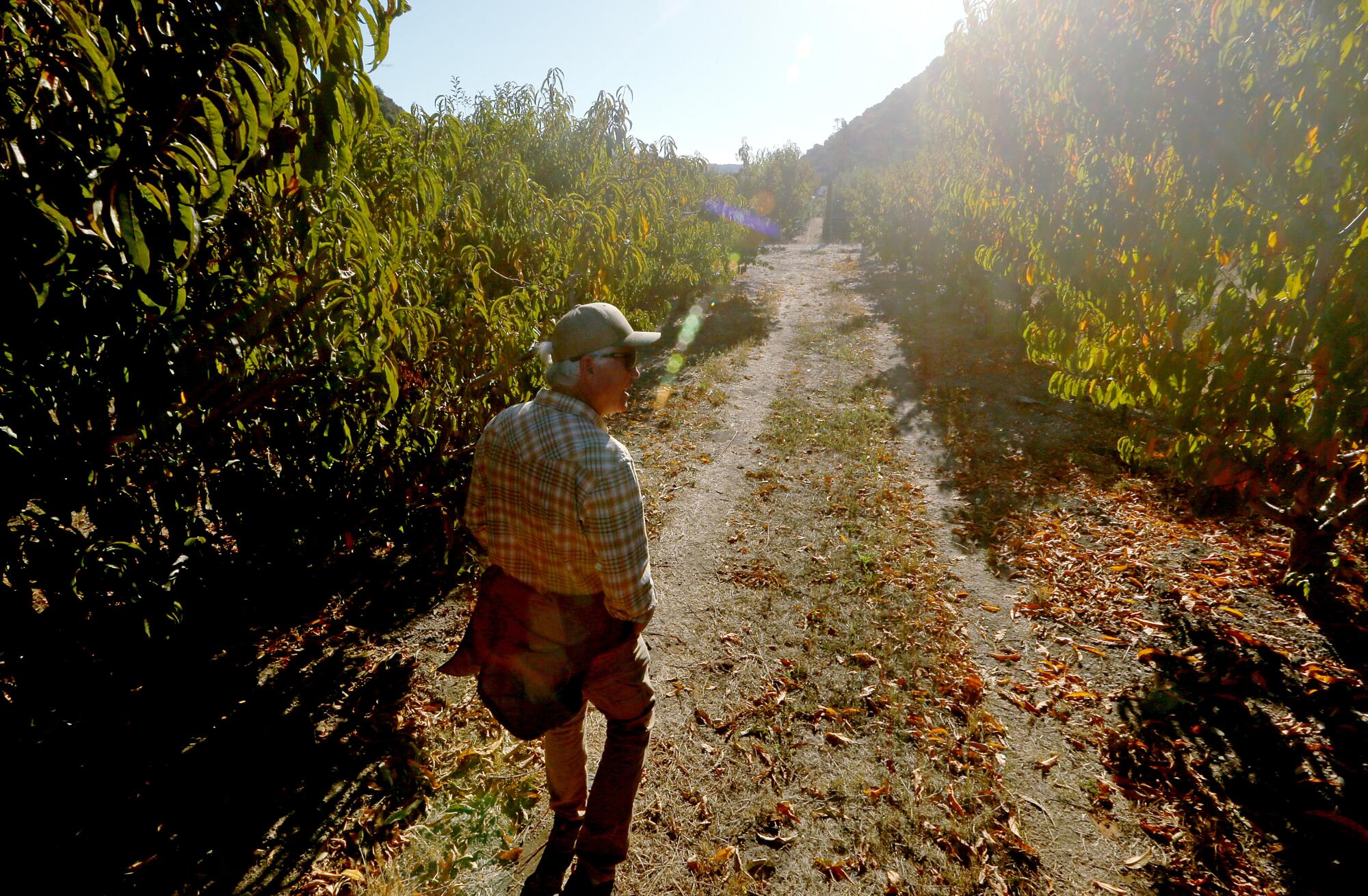
Cirone, who is 64, picks fruit together with his 34-year-old son Patrick and one employee. They pack the apples in boxes, load them into a van and drive them to farmers markets around San Luis Obispo, as well as the weekly farmers market in Santa Monica, where their stand is popular and busy.
The Cirones are part of a special breed of California growers who are successfully cultivating crops using minimal amounts of water. They are showing how, in the right places, agriculture can be done differently, with a lighter touch on the environment than the many large-scale industrial farms that draw heavily on the state’s limited water supplies.
In places along the Central Coast, these dry farming specialists harness the water their lands naturally have to produce crops including watermelons, cantaloupes, wine grapes, olives and tomatoes.
“It’s amazing what plants can do,” Cirone said, standing among his trees. “It’s surprising what they can get by with.”
California groundwater levels have risen in many areas this year, but after years of over-pumping, aquifer levels largely remain lower than two decades ago.
Cirone said this kind of farming can’t be done everywhere. It takes special conditions, including the right microclimate. The location of See Canyon, wedged in mountainous terrain four miles from the coast, creates ideal conditions for growing apples and other fruit.
“It’s a naturally wet place,” he said. “When it rains, it’s so cool out here. The clouds come in and it’s misty, and it all soaks in.”
The forested ridges catch rain, and water percolates into the canyon’s alluvial soil, where the trees’ roots tap into shallow groundwater. The flowing creek beside the farm has never run dry in the decades that Cirone has been farming.
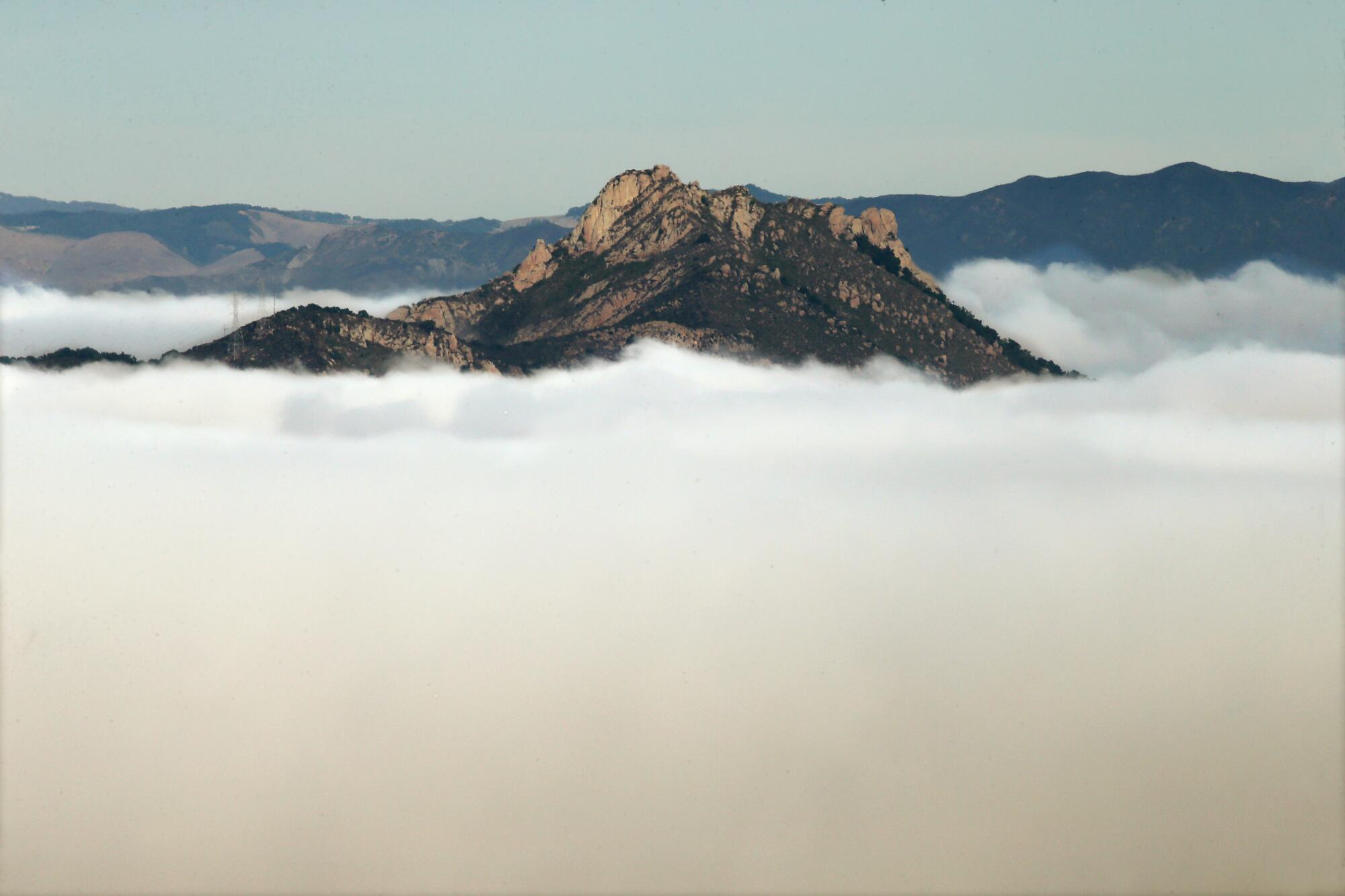
The canyon gets colder than surrounding areas in the winter, providing vital chilling for trees to blossom. As the apples are ripening, the morning fog often gives way to warm sun.
“It’s kind of a magical little spot. I love it,” Cirone said.
“There is an old adage: good farmers farm good soil,” he said. “I farm good soil, and it makes a world of difference.”
Apples have been grown in See Canyon for more than a century. Cirone owns an orchard that was founded in 1916. Some of the remaining century-old trees are gnarled, with branches so thick they need to be propped up with boards to prevent collapse.
Cirone carries on these traditions while planting new trees, pruning, and practicing dry farming methods. Techniques for conserving water include rolling a cultivator tool over the ground to create a “dust mulch” layer that holds moisture in the soil. He also selects rootstocks that are drought-tolerant.
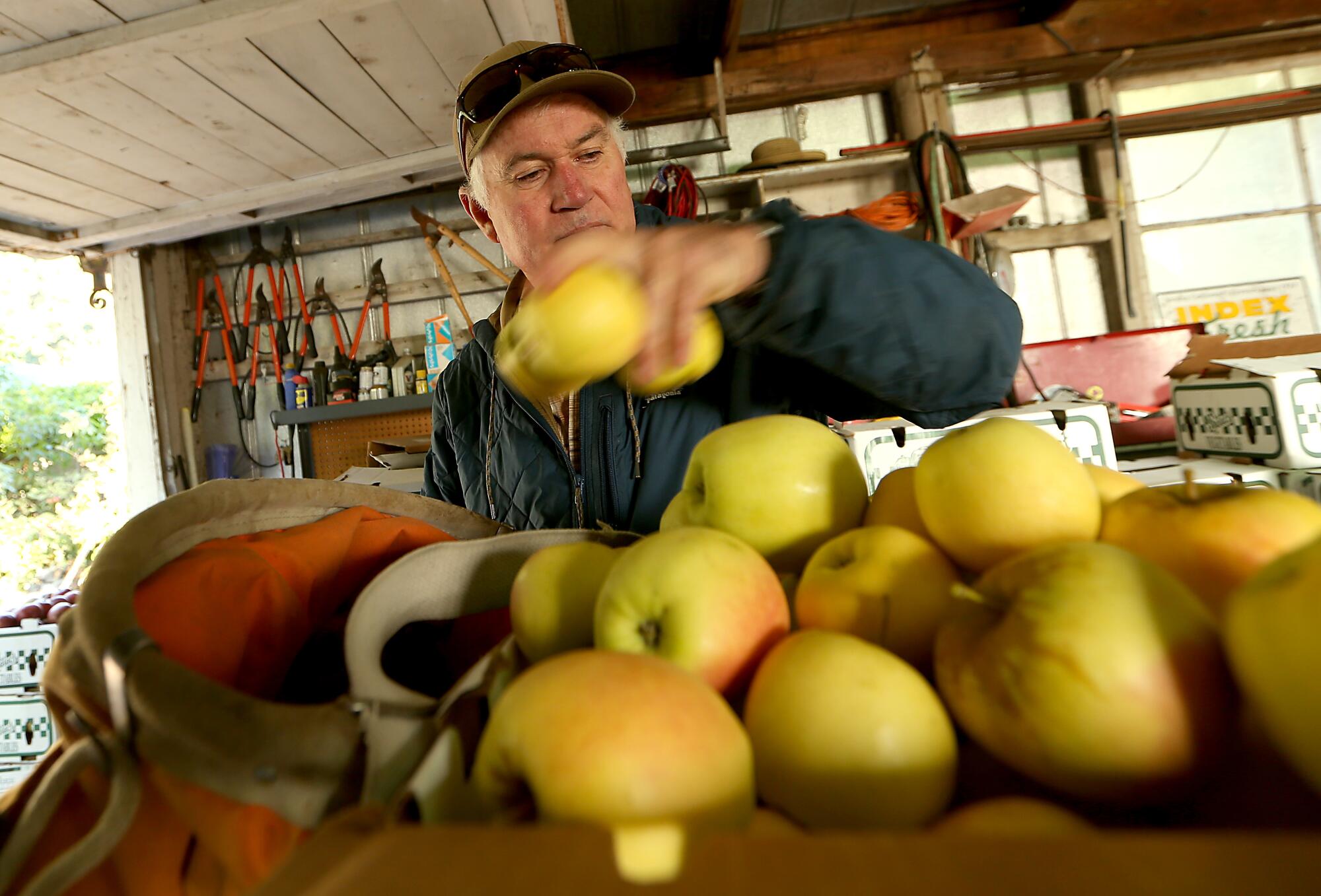
Dryland farming has a long history in the arid West, including among Indigenous peoples such as the Hopi, who today carry on their ancient traditions of growing corn, beans and squash relying on the rains. Settlers in California also dry farmed, but in the 20th century, growers began relying heavily on irrigation, which boosted crop yields.
“We used to do more of it in California,” Cirone said. “I think sometimes you’ve just got to look back and go, ‘Maybe things were better back then.’”
Cirone has wells on parts of his farm, and his focus on dry farming doesn’t stop him from watering a little when needed. To help newly planted trees get established, he waters them sparingly, lately once every 10 days, with drip irrigation lines.
He and his crew also sometimes hand-water trees with buckets.
Researchers examined plans for managing groundwater in the Central Valley. They found local plans leave thousands of wells at risk of running dry.
During the severe drought from 2020 to 2022, Cirone said he was forced to water to try to save adult trees that were struggling. With the ground parched, the trees produced a smaller crop.
The heat scorched parts of the orchard, leaving withered leaves that Cirone said looked like “someone took a torch to them.” But those damaged trees recovered with this year’s heavy rains and are now flourishing again.
The canyon got 61 inches of rain this year, one of the wettest Cirone has seen.
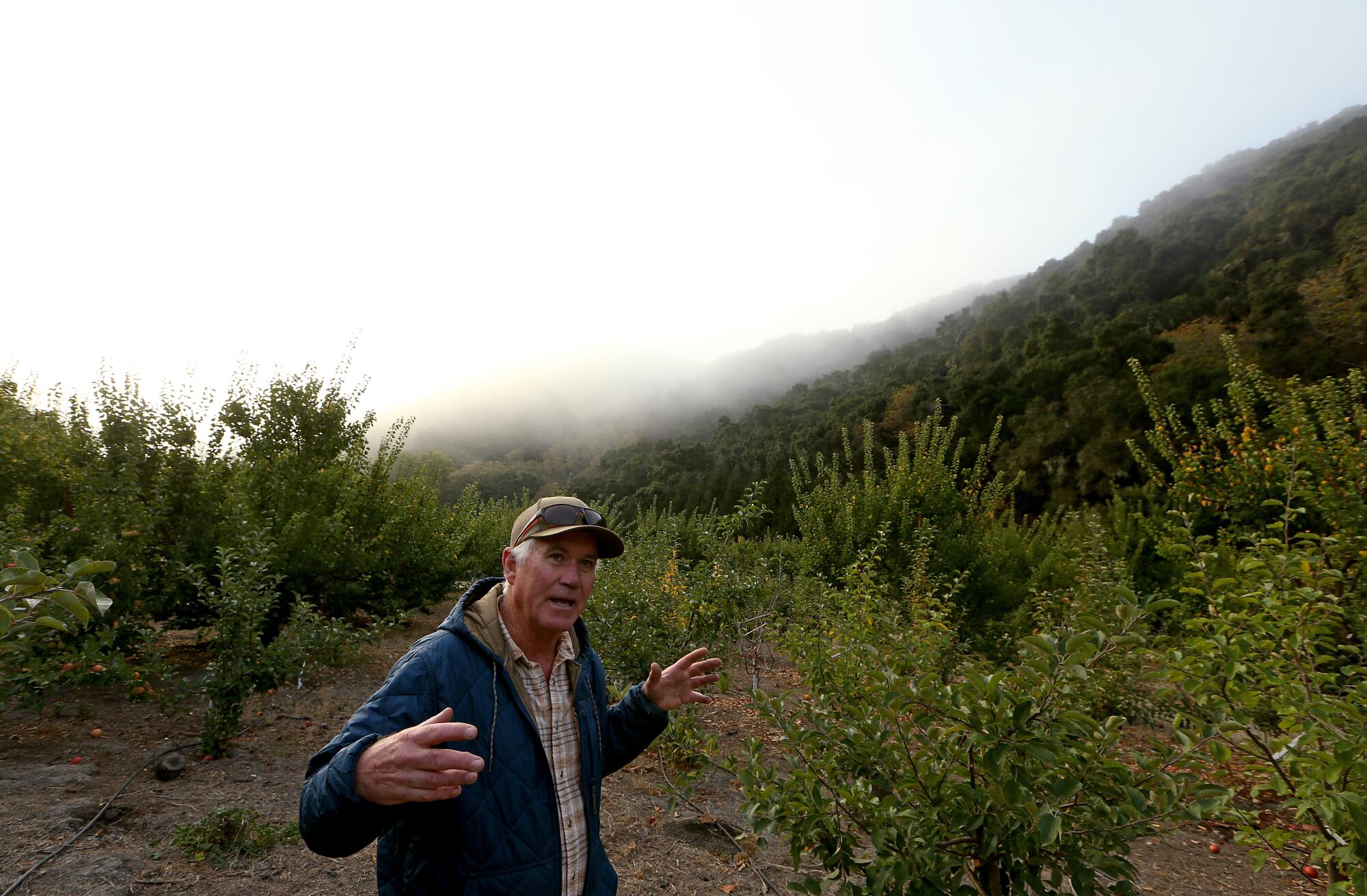
Cirone said he’s concerned about how human-caused climate change is unleashing more extreme weather swings, and what that might mean for the future. For now, though, he sees all the rain as a blessing, along with cold conditions that filled the orchard with a massive bloom of white and pink blossoms.
This fall, Cirone and his son have been busy picking and selling the largest apple crop they’ve ever produced.
“The way the fruit ripened, I was thankful. But it was just too much,” Cirone said. “We’ve had to really move quick this year. And that’s been the stressful part.”
Cirone grows about 60 varieties of apples. At the peak of harvest in October, he can have up to 25 different kinds laid out in crates at his stand.
Their names evoke colors, flavors and textures: Suncrisp, Honeycrisp, Cameo, Jonagold, Sierra Beauty, Winesap, Arkansas Black, Splendor.
If you ask Cirone which is his favorite, he will tell you the Gold Rush, a golden-green apple with a freckled skin, crisp crunch and rich, tart flavor.
Cirone grew up in San Luis Obispo and graduated from Cal Poly with a degree in pomology, or fruit science. A lover of the outdoors and mountain climbing, he knew he never wanted to work in an office. He started a fruit-tree pruning business, and then began farming.
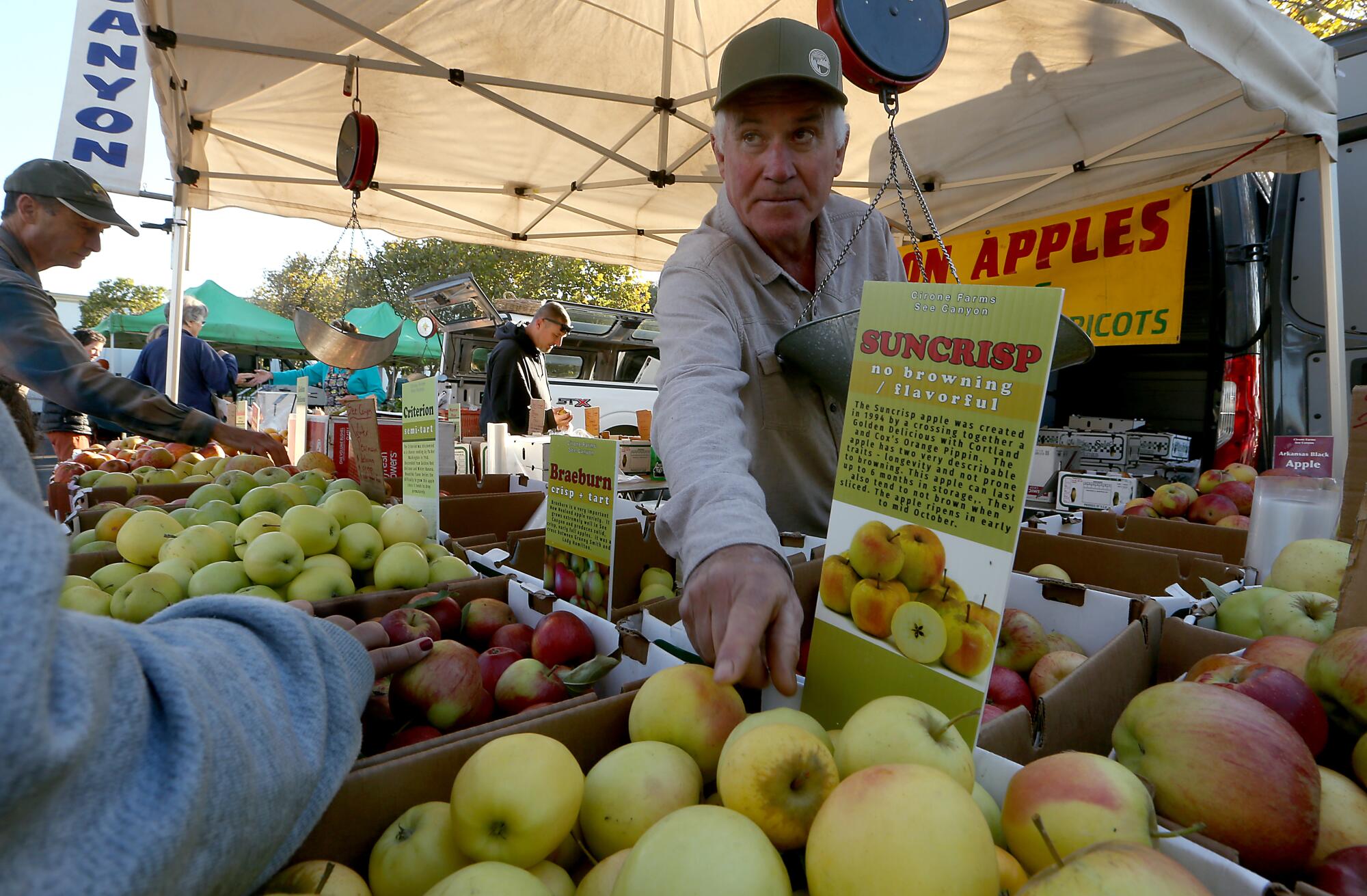
At the farmers market in San Luis Obispo, he knows many customers by name and chats while weighing fruit. Some arrive asking which varieties he suggests for everyday eating, salads or pie-making.
Others come searching for a specific type of apple. Gary Hamel, a retired chef, bought a 22-pound box of Winter Pearmains, an heirloom variety that grows on gnarled century-old trees.
“You have to get them when they’re available,” Hamel said. “I’ve missed them a couple of years.”
In California’s Cuyama Valley, companies pump vast amounts of water to grow carrots. When companies sued residents over water, the community launched a boycott.
The green apples are crisp and sweet, with a peel that carries a delicate, lingering flavor.
For some customers, there is no going back to supermarket apples after having freshly picked dry-farmed apples.
Also popular are dry-farmed watermelons that grower John Lahargou has been selling from the back of a pickup, offering samples on toothpicks.
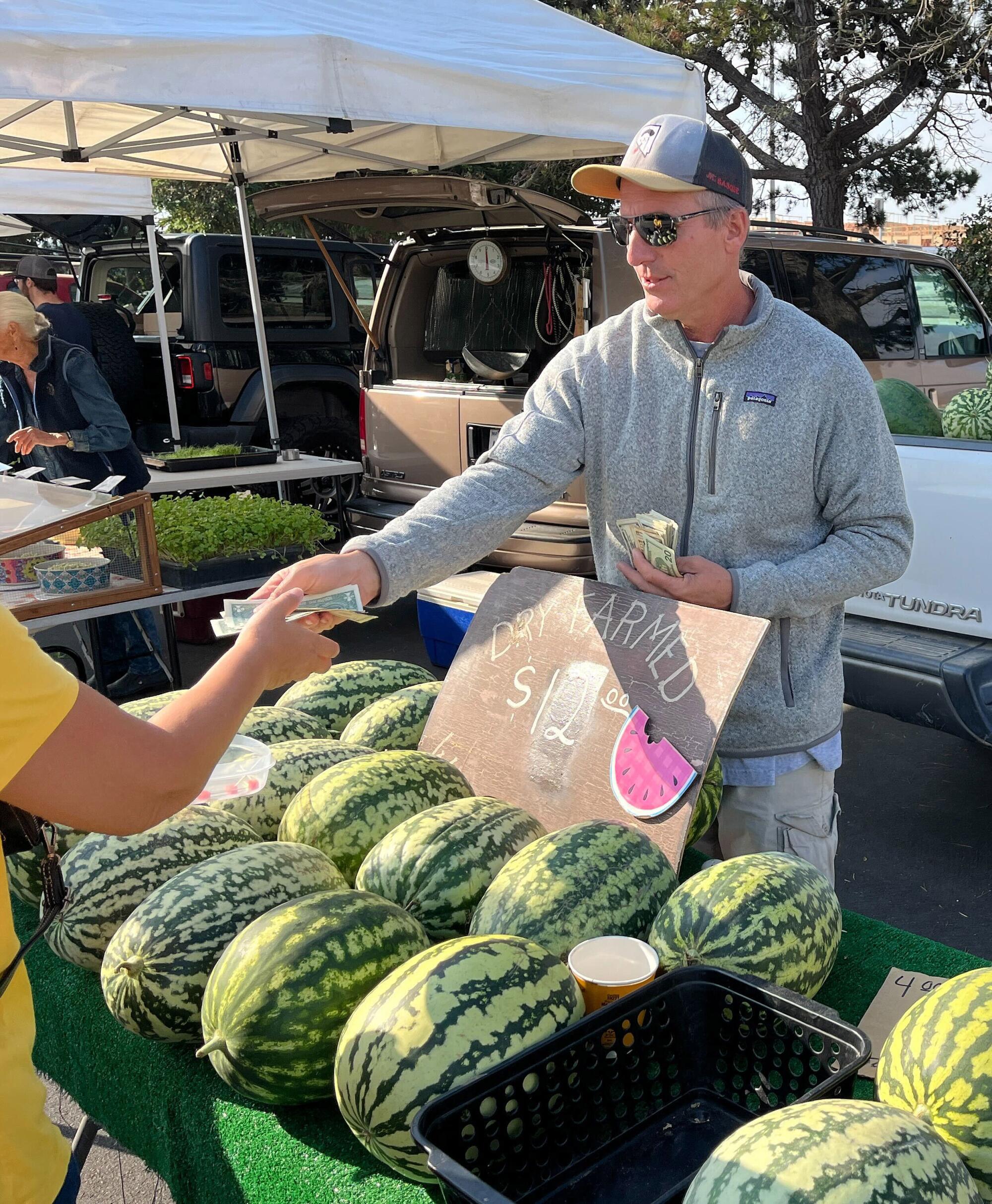
“We don’t water them,” Lahargou told a customer. “That’s what makes them super sweet.”
Lahargou has dry farmed for decades in Paso Robles and remembers the technique was once widespread. The area produced dry-farmed grain, hay and almonds. But much of the farmland was overtaken by vineyards irrigated with groundwater, which has caused aquifer levels to decline.
Lahargou continues dry farming because he doesn’t have a well. And he said it’s given him something special: juicy melons that burst open with a touch of the knife.
“We had quite a lot of rain,” he said. “That’s why they’re so good.”
The season’s last watermelons were sold in November. But the Cirones have continued harvesting apples.
Patrick Cirone began helping his father at farmers markets as a boy, handing out plastic bags. He has been working full time in the business for eight years, and says he continues learning nuances, including when different varieties should be picked.
“Every year’s different too. That’s the thing,” he said. “So it’s trying to get a grasp on that.”
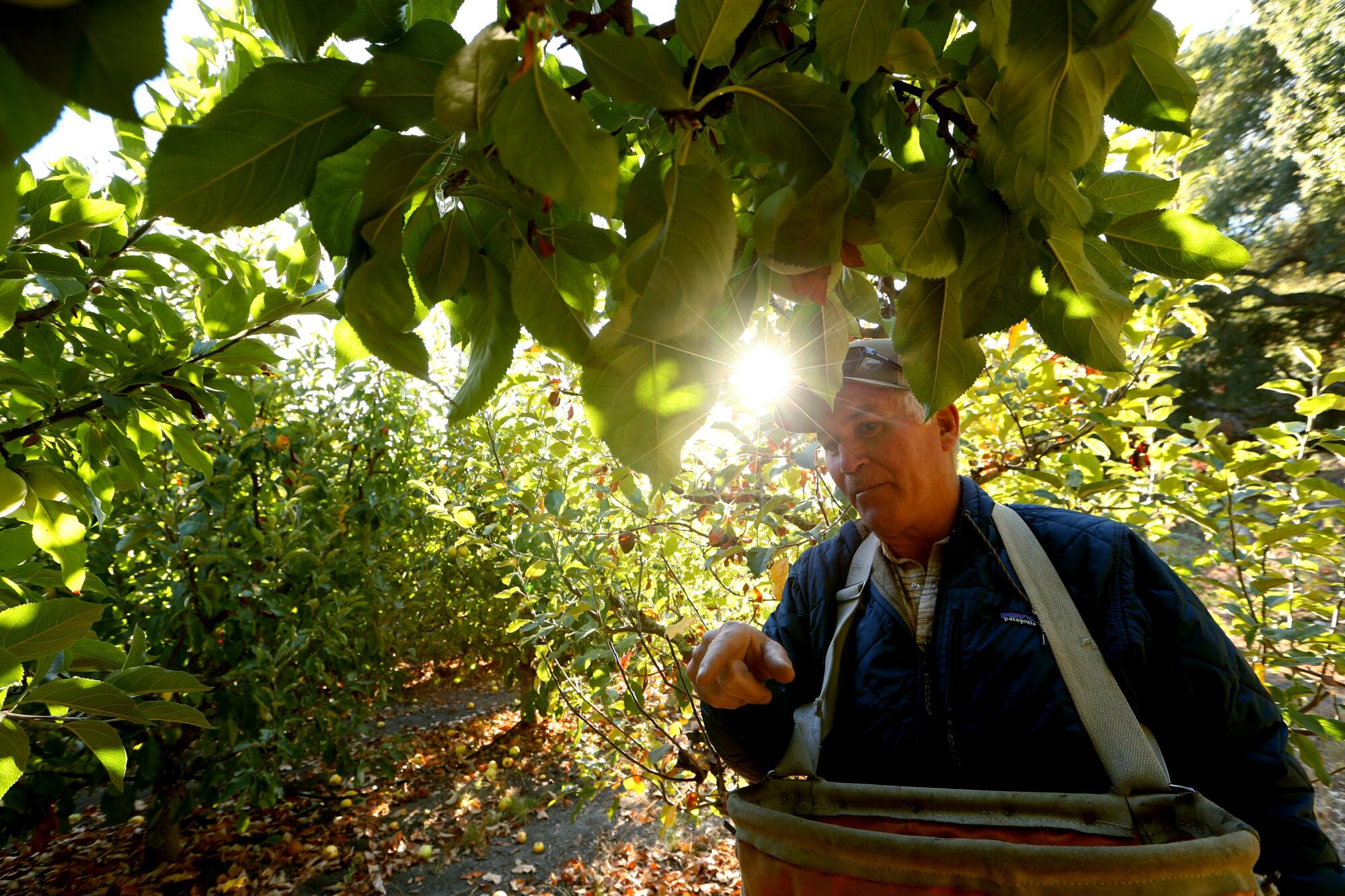
The Cirones have a weekly routine. Each Wednesday, they wake up at 1 a.m. to drive to Santa Monica, where by sunrise they are raising their tent and unloading fruit for the crowds that will soon line up.
When they aren’t at a market, they are often picking on the farm.
On a recent morning, Mike Cirone stood on a ladder, filling a bag with Fuji apples. He chatted in Spanish with his longtime employee Meliton Robles, discussing where to pick next.
The sweet scent of fallen apples filled the air.
Usually, Cirone sells apples until December. This year, the crop is so abundant he expects to continue selling into January.
“We needed a good year,” Cirone said. “We’ve come off a couple of light apple years. The drought really had a big effect on these trees.”
Inspired by Octavia Butler’s Afrofuturist fiction, a Sonoma County farmer helps Black Californians connect with nature and learn lessons in climate resilience.
Years ago, Cirone didn’t worry much about weather extremes. Now, he said, he often thinks about climate change, and how he might prepare for the next severe drought or heat wave.
When planting new trees, he has started choosing late-ripening varieties that could fare better as the seasons shift with rising temperatures.
“Everything is being affected,” he said. “And that drumbeat seems to be getting louder.”
Cirone hopes that his farm’s location in the canyon will make it resilient, and that his methods will help sustain the farm.
But he’s concerned that other farming regions of California, particularly the Central Valley, are headed for dire consequences as they grapple with chronic groundwater depletion combined with hotter, drier conditions.
Cirone said he sees large-scale export-driven agriculture as part of the problem.
“Should we be growing bazillion acres of almonds to be exported around the world? That doesn’t make sense to me. That’s a misuse of water,” Cirone said. “It’s not sustainable. It’s going to be a new desert out there. I don’t understand why we’re chasing money at that level.”
“I think water is going to be an issue. And we need to be very thoughtful about that as a society,” he said.
He said he believes promoting more local agriculture would help, along with adopting farming methods that work with nature, including the sustainable techniques of agroecology and permaculture. Cirone said dry farming should be viable in various parts of California, including areas where it hasn’t been tried before.
“We need to start to look at things differently,” he said. “We have to be part of the solution.”
Cirone said he sees himself as part of a movement to return to a more natural form of farming that involves planting in the right locations and matching crops to local conditions.
“You’re not forcing things, essentially,” he said. “I think it’s a pretty benign form of farming.”
While he continued picking, the rising sun lighted up the orchard and the oak trees on the canyon’s steep ridges.
“Oh, here’s some nice Fujis,” he said, approaching a tree loaded with apples. “I love the way these look.”
He said he would be back soon with more boxes. There were still many apples left to pick before the end of the harvest.

